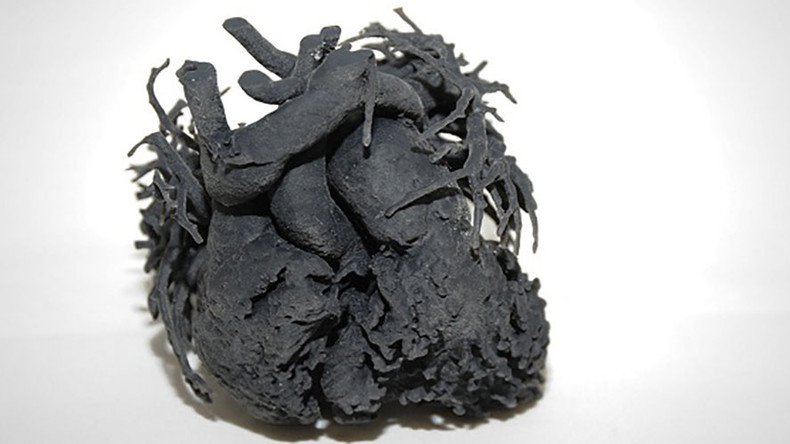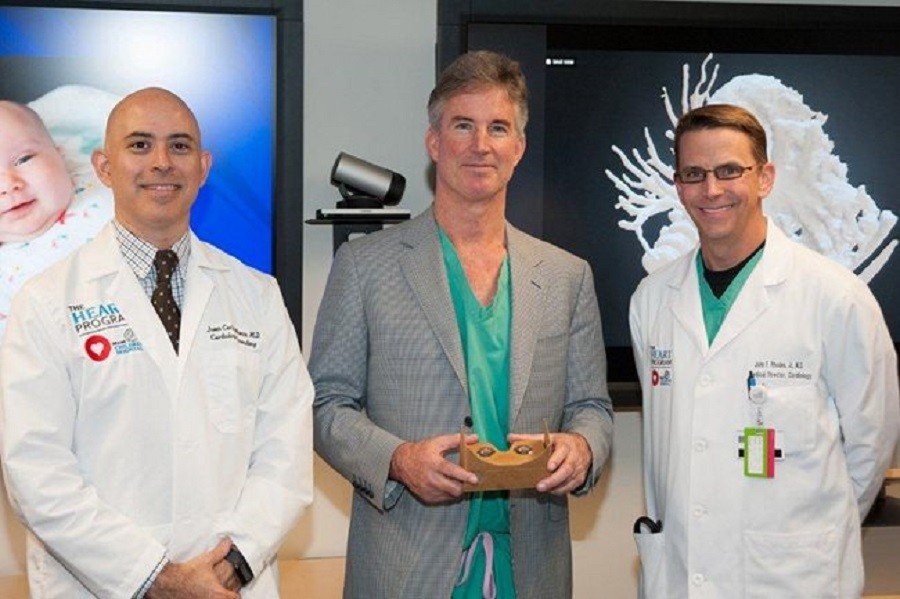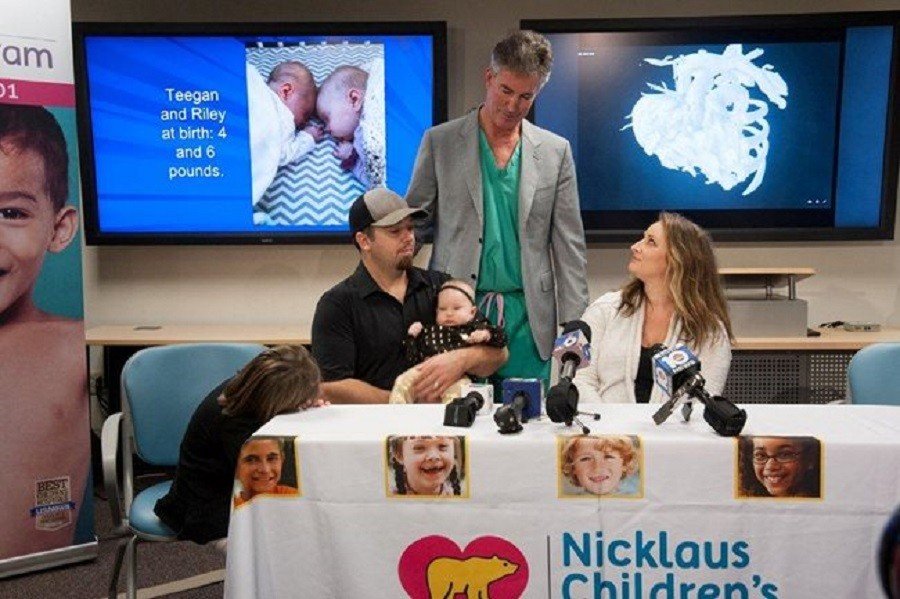Doctor uses Google Cardboard, iPhone to perform ‘inoperable’ surgery on infant

One Minnesota family’s Christmas present came in a box this year. But not just any box: A Google Cardboard with an iPhone inside. Oh, and the future of pediatric surgery, too, as doctors saved their 4-month-old daughter with low-cost virtual reality.
Identical twins Riley and Teegan Lexcen were born in August. Riley was healthy, but Teegan only had one lung and her heart displaced into her left chest cavity where her other lung should have been. The left side of her heart was also severely underdeveloped, along with a plethora of other cardiac problems. Doctors in Minnesota told her parents, Cassidy and Chad Lexcen, that their newborn was inoperable.
The twins were sent home from the hospital so the family could make the most of their time together before Teegan died.
How doctors at @Nicklaus4Kids used #GoogleCardboard + an #iPhone to save an infant. https://t.co/acOWiBZnFQ#Healthpic.twitter.com/SEPmUNUgcA
— Howard Cohen (@HowardCohen) December 22, 2015
"It was devastating," Mrs. Lexcen told WSVN. "Any parent that has to go through that is... it's devastating, and we lived every day by every day, knowing this could be her last day with us."
‘Inoperable’ was a diagnosis that the family wasn’t willing to accept, so they took to the internet to research other options. That’s when they found Dr. Redmond Burke of Nicklaus Children’s Hospital in Miami, Florida.
The congenital heart surgeon has never been one to shy away from a challenge, and was named one of the 20 most innovative modern pediatric surgeons by Top Master’s in Healthcare Administration in 2013. Inoperable, Burke told reporters, is “a word we hate here.”
“The patient was dying. Without surgery she would be dead by Christmas,” he told UploadVR.
But there was a reason no one else was willing to attempt the surgery on the 4-month-old.
“Surgeons need to be able to visualize the entire procedure before they step into the operating room,” Burke said. “Other teams passed on Teegan because they kept running into walls when trying to visualize her procedure.”
That’s when the answer came to the surgical team at Nicklaus in the form of a cardboard box. Dr. Juan Carlos Muniz, the hospital’s director of cardiac MRI, had been studying 3D technology.

Two weeks before Teegan’s surgery, Muniz went to Burke and “handed me a piece of cardboard with a smartphone in it,” Burke said. “I looked inside and just by tilting my head I could see the patient’s heart. I could turn it. I could manipulate it. I could see it as if I were standing in the operating room.”
The team of doctors headed up by Burke had taken CT scans of Teegan's heart and lung, and then uploaded the images to an iPhone. They used Google Cardboard ‒ a virtual reality (VR) platform made of a foldable cardboard mount ‒ and Sketchfab ‒ an application that turns a two-dimensional smartphone image into a 3D one ‒ to create a model of Teegan’s chest.
It was “a repair that had never been done before,” Burke told reporters. “There are certainly more expensive technologies you could use to look at virtual imaging, but I thought this was really elegant because it’s essentially a cardboard box.”
The 3D model made from Teegan’s scans allowed Burke to decide whether he could use a standard incision over her sternum or if he would need to cut directly over her heart.
“With VR I could see her chest wall as well as her heart. From there I could see that the standard incision would be fine. Right there the first big hurdle was crossed,” he told UploadVR.
Teegan’s surgery took seven hours, and doctors consider it a success. Afterwards, her heart and lung were too weak to function on their own, so she was placed on on heart-lung bypass for three days and left her heart open for five days, WSVN reported.
Doctors at @Nicklaus4Kids used @google#Cardboard to save baby's life. @ERodCBS4's story: https://t.co/pmUKfnJeJUpic.twitter.com/7w9q5BFTgC
— CBS4 Miami (@CBSMiami) December 22, 2015
A lot could have gone wrong, though.
“I don’t like to go back and rethink what could have happened, but I will say that this technology allowed us to perform the operation quicker and with much less trauma to the patient,” Burke told UploadVR. “If she had been under for just one more hour, her kidneys may have suffered too much and she could be alive, but on dialysis for the rest of her days.”
Now she’s recovering in the Nicklaus ICU, although she will need another two operations in the months and years ahead.
"The people who are taking care of Teegan right now are anticipating everything she needs minute by minute and hour by hour," Burke said, "and that's how you get these kids through, and she's got a good shot."

The Lexcens ‒ including daughter Harper, 6, and son Asher, 3 ‒ were able to spend Christmas as a family, complete with both twins, albeit in the hospital.
“You don’t imagine having to spend your first Christmas away from home like we are doing in a hospital setting,” Mrs. Lexcen told the Miami Herald while cradling Riley. “But for our first Christmas with the twins, what better gift could we have other than having the gift of life for our baby girl again?”












